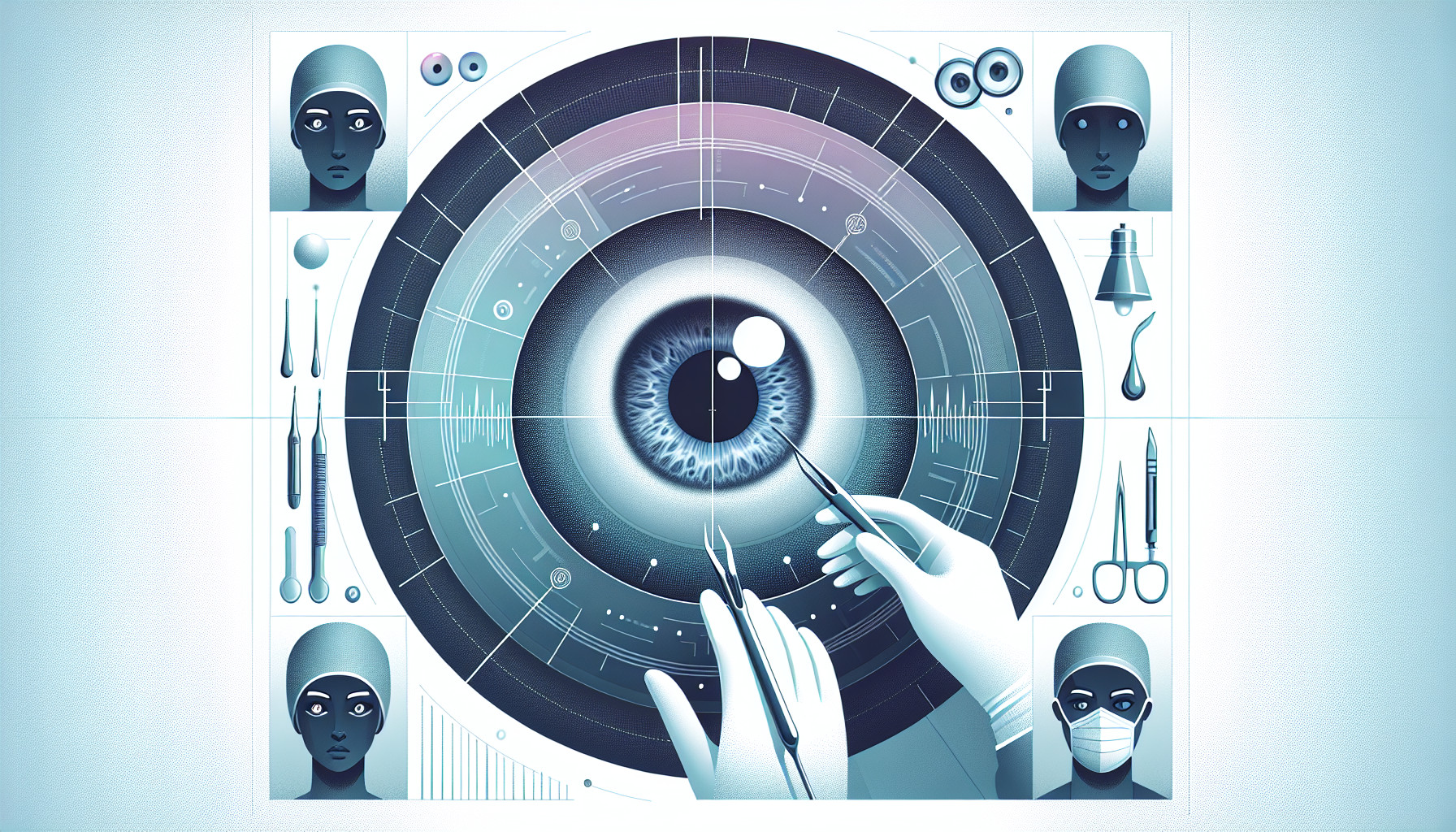Our Summary
This research paper discusses the use of intraoperative optical coherence tomography (iOCT) in retinal surgery, a controversial subject among professionals. iOCT is a tool that combines the surgeon’s regular 2-D view of the eye’s fundus (the back part of the eye) with depth information to create a 4-D view (3-D plus change over time), which is similar to augmented reality. This technology aims to help surgeons see fine structures in the eye that would normally be hidden.
The hope is that this live 3-D view, with real-time feedback, will provide surgeons with extra information and make the surgery safer. However, the paper indicates that this iOCT technology is not as helpful as it initially appears, especially in macular surgery (surgery on the part of the eye responsible for sharp, central vision). It doesn’t often provide information that couldn’t be obtained without it, or that couldn’t be found in better quality with pre-surgery testing. The paper concludes that iOCT may only be particularly useful in some specific cases, especially in subretinal surgery (surgery beneath the retina).
FAQs
- What is intraoperative optical coherence tomography (iOCT) and how is it used in retinal surgery?
- Does the use of iOCT in macular surgery offer any additional benefits compared to traditional pre-surgery testing?
- According to the research, in what specific cases might iOCT be particularly useful in retinal surgery?
Doctor’s Tip
A doctor might tell a patient undergoing retinal surgery that while iOCT technology may be used during the procedure, it is not always necessary for successful outcomes. They may reassure the patient that the surgeon is skilled and experienced in performing the surgery, and that the use of iOCT is just one tool among many in their toolkit. The most important thing for the patient to focus on is following post-operative instructions and attending all follow-up appointments to ensure the best possible recovery.
Suitable For
Patients who may be recommended for retinal surgery include those with conditions such as retinal detachment, macular holes, epiretinal membranes, diabetic retinopathy, and age-related macular degeneration. These conditions can cause vision loss or distortion and may require surgical intervention to prevent further damage or restore vision. Patients with these conditions may benefit from retinal surgery to improve their visual outcomes and quality of life.
Timeline
Before retinal surgery, a patient typically undergoes a consultation with an ophthalmologist to discuss their condition and the need for surgery. They may also undergo pre-surgery testing such as optical coherence tomography (OCT) to assess the condition of the retina.
During retinal surgery, the surgeon uses tools and techniques to repair or remove damaged tissue in the retina. In some cases, intraoperative optical coherence tomography (iOCT) may be used to provide real-time feedback and improve the accuracy of the surgery.
After retinal surgery, the patient will be monitored closely for any complications or changes in vision. They may need to follow a specific post-operative care plan, which may include using eye drops, wearing an eye patch, and attending follow-up appointments with their surgeon.
Overall, the use of iOCT in retinal surgery is still a topic of debate among professionals, with some believing it provides valuable information and others questioning its usefulness. Further research is needed to determine the true benefits of this technology in improving surgical outcomes for patients undergoing retinal surgery.
What to Ask Your Doctor
- What specific benefits does using iOCT in my retinal surgery provide compared to traditional methods?
- Are there any potential risks or drawbacks associated with using iOCT during my surgery?
- How will using iOCT affect the overall success rate of my surgery?
- Will the use of iOCT impact the length of time needed for my surgery or the recovery process?
- Are there any additional costs associated with incorporating iOCT into my retinal surgery?
- How experienced are you in using iOCT technology during retinal surgery?
- Are there any alternative technologies or methods that could be used instead of iOCT for my specific case?
- Can you provide me with any specific examples or case studies where iOCT has significantly improved the outcome of retinal surgery?
- How will the information obtained from iOCT during my surgery be used to guide your decision-making and techniques?
- What follow-up care or monitoring will be necessary after my surgery, particularly in relation to the use of iOCT?
Reference
Authors: Szurman P. Journal: Klin Monbl Augenheilkd. 2020 Oct;237(10):1225-1229. doi: 10.1055/a-1153-4288. Epub 2020 Oct 15. PMID: 33059379
